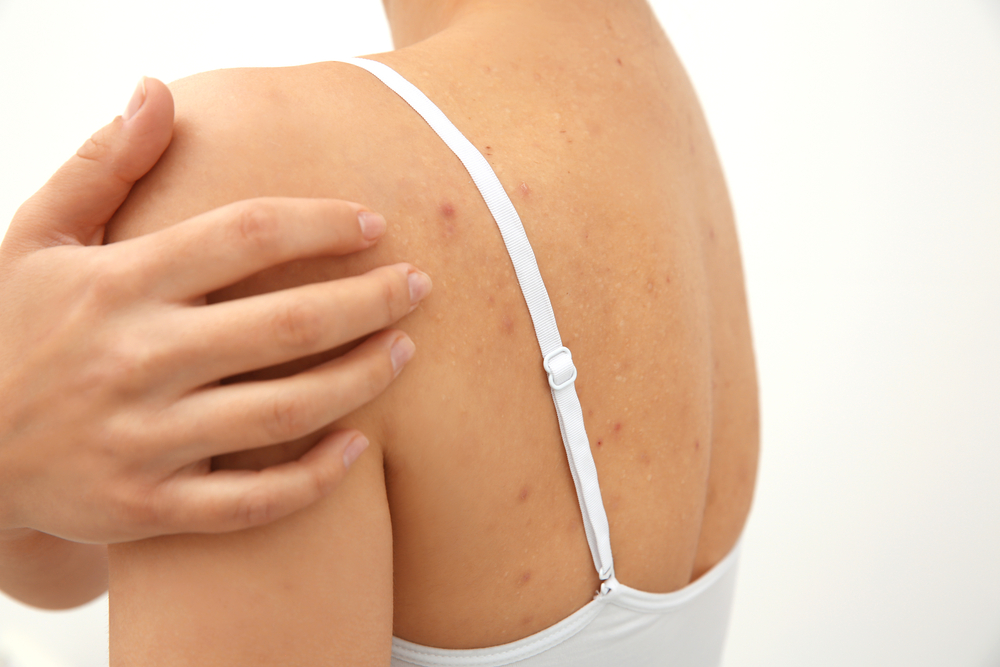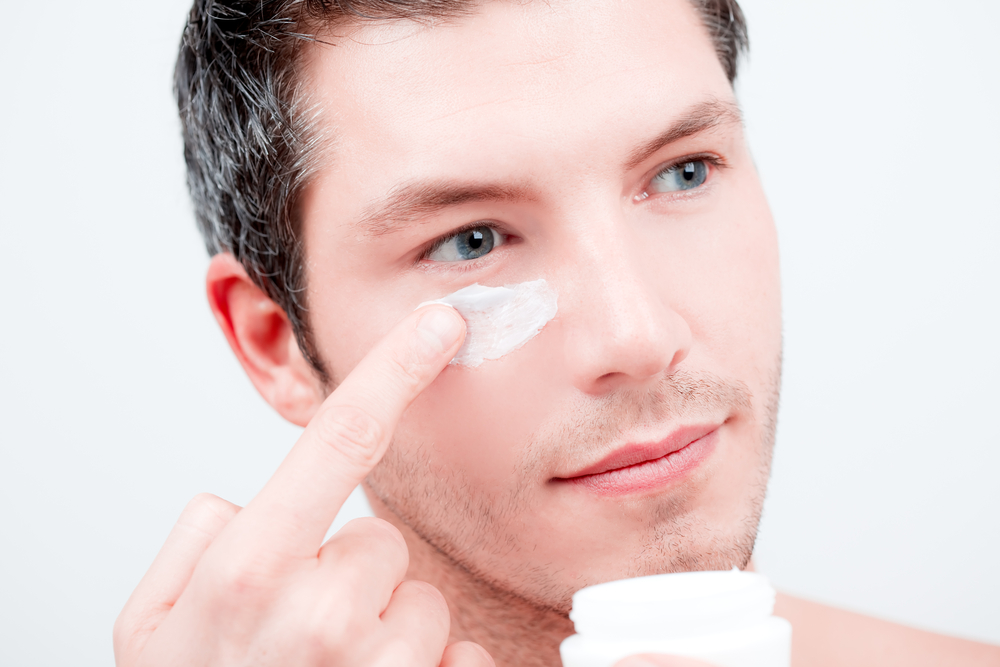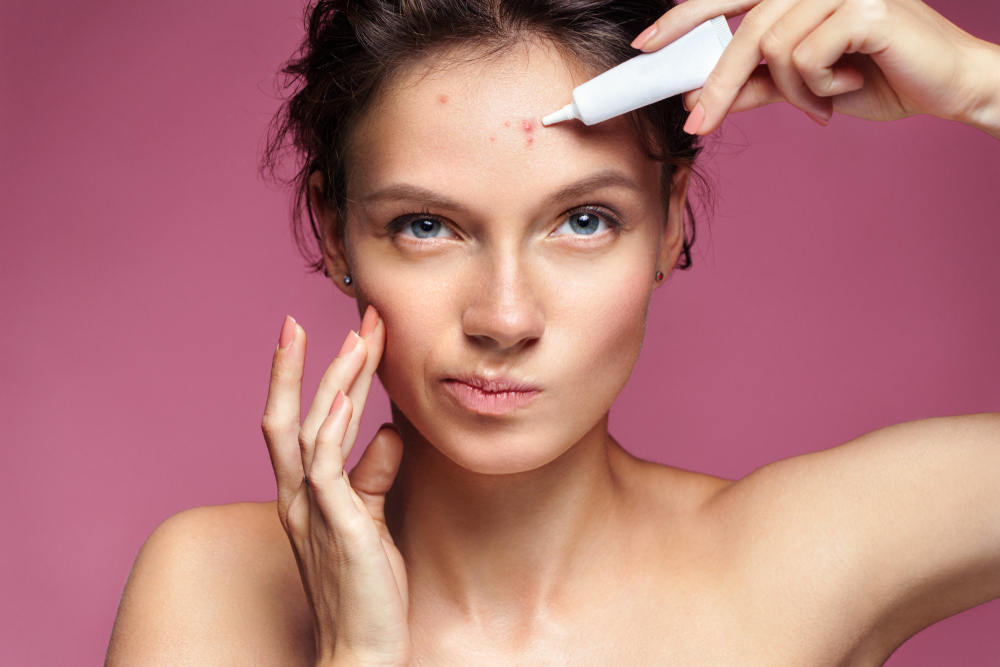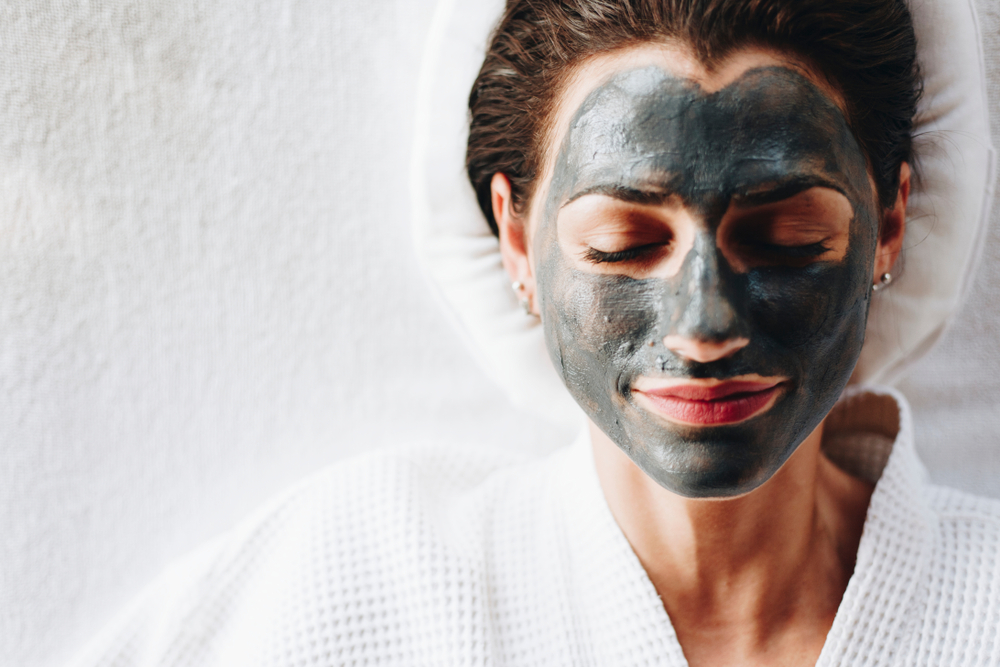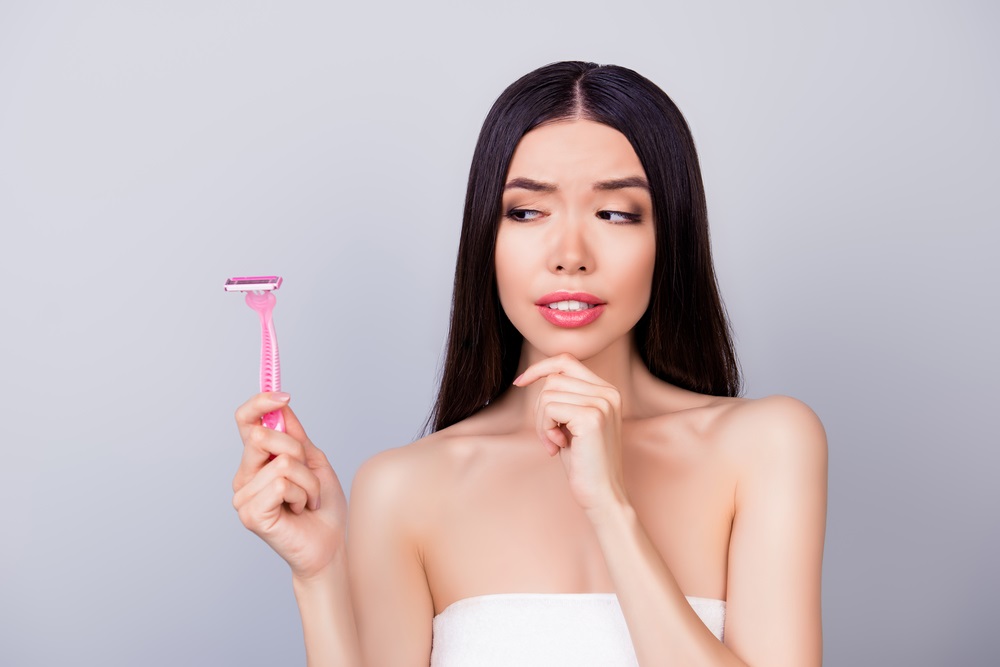- Acne can occur anywhere on the body, including the chest, back, and shoulders.
- Contributing factors include sweating, choice of clothing, and physical stressors.
- Basic hygiene, spot treatments, and body washes can help manage outbreaks.
Chest and back acne have the same root causes as facial acne: a combination of dead skin cells, oil produced by the skin (called sebum), and bacteria (Propionibacterium acnes) that interact and ultimately lead to inflammation in the form of pimples and cysts on the skin.
Here’s what you can do to prevent and treat these outbreaks.
What Causes Chest and Back Acne?
Our skin naturally sheds countless dead skin cells every day. If these dead skin cells mix with bacteria and oil on the skin, it clogs the pores and leads to inflammation in the form of acne.
Chest acne (sometime referred to as chestne) and back acne (sometimes called bacne) are not exceptions to these general rules: they usually result from clogged pores on the chest and back.
Women may be more prone to chest and back acne (as well as to other types of acne) due to hormonal fluctuation during menstruation or pregnancy.
Other contributing factors include:
- Sweat
As sweat builds up on the skin from exercise or other activities, it may combine with oil, bacteria, and dirt on the skin, leading to outbreaks. The chest and back may be more likely to be exposed to sweat, as they are usually hidden beneath layers of clothing.
- Clothing
The material and the fit of an item of clothing can contribute to outbreaks. Many types of clothing can irritate the skin and prevent it from breathing, thus creating a perfect breeding ground for acne.
- Bedding
When you sleep, your bedding may absorb oil, dirt, dead skin cells, sweat, and bacteria from your skin. If your bedding is not washed regularly, these acne-promoting culprits may be redeposited on your skin and cause further breakouts.
- Acne mechanica
Acne mechanica is the term for acne that develops as a result of irritation to the skin, often due to friction or pressure from clothing or a backpack. Sports equipment is also often to blame, as is tightly fitting clothing such as bras.
How to Prevent Chest and Back Acne
In many cases, breakouts can be avoided by making the following simple changes to your daily skincare regimen.
- Shower regularly with gentle skincare products
Daily showers are essential in reducing the likelihood of outbreaks. Use a gentle body cleanser (free of perfumes, dyes, and oils) on your whole body. You may also want to select a gentle shampoo and conditioner (also free of perfumes, dyes, and oils), because these too may clog pores.
Showers should be warm, not hot. Once you’ve finished washing, you can briefly switch to cool water before turning the water off. This will close your pores.
You should also shower after any activity that promotes sweating.
- Exfoliate weekly
Make exfoliation part of your regular showering routine: once a week, use a brush to gently loosen dead skin before getting in the shower, then to complete the process use an exfoliating body wash in the shower.
- Choose skin-friendly fits, fabrics, and detergents
Especially when working out, choose clothing that is breathable or made of sweat-wicking fabric, which means that it draws sweat away from your body. There are many fabrics to choose from, including cotton, bamboo, and polyester.
Besides being made of the right material, clothing should be loose-fitting enough to allow your skin to breathe. Change out of sweat-soaked fabrics, and don’t wear workout clothing more than once: wash after every use.
Wash bedding every week as well. If possible, choose a gentle laundry detergent and fabric softener, and make sure they are free of dyes and perfumes. Labels for these types of products are likely to read, “for sensitive skin” or “hypoallergenic.”
- Avoid carrying a heavy backpack or purse
Anything that puts pressure on your clothes and the skin underneath them may contribute to the development of acne.
If you can, stop lugging around a heavy backpack or purse. If you must carry a bag with you, choose one that you can hang on the arm or carry by hand. The best option is a rolling backpack or briefcase, which have the added benefit of taking the weight off your back or arm.
- Choose gentle, oil-free skincare products
If something is going to go on your skin — whether it’s soap, lotion, make-up, or any other product — read the label first. Choose products with labels that say they are “oil-free.” Other ways of indicating this include “non-comedogenic, “non-acnegenic,” and “won’t clog pores.”
- Prevent sun damage
The sun can exacerbate acne and prolong healing time. Whenever you are out in the sun, cover your skin with clothing and apply sunscreen to any areas that remain uncovered. Again, be sure to choose an “oil-free” sunscreen.
- Avoid picking or popping acne
According to New York City dermatologist Dr. Eric Schweiger, “picking at or popping pimples — what we often refer to as bathroom surgery — leads to more inflammation on the skin. This results in the acne sticking around for longer, but also may increase the likelihood of post-inflammatory changes, such as hyperpigmentation and acne scarring.”
Medical and Natural Treatment Options
Topical medications come in a variety of formulations, including over-the-counter (OTC) creams and gels that are used as spot treatments. These can be applied directly to blemishes, usually after washing, to facilitate healing. Look for the following ingredients:
- Benzoyl peroxide (10%)
- Salicylic acid (5%)
- Adapalene (0.1%)
Natural remedies for acne often have antibacterial and anti-inflammatory properties, and can be used for spot treatment in the same manner as OTC topical medications:
- Diluted tea tree oil
- Lavender oil
- Cinnamon and honey
- Apple cider vinegar and water
Medicated washes often contain the same ingredients used in spot treatments, and can be spread over a wider outbreak area. They are applied and left on the skin for a few minutes before being washed off in the shower. A 5% benzoyl peroxide or 3% salicylic acid concentration is ideal for wash-off applications.
As an alternative to body washes containing medication, you may choose a natural remedy that has similar properties. Try products that contain cinnamon, honey, charcoal, and/or mud.
A general rule for topical treatments: apply the product to a small, inconspicuous area to ensure compatibility with your skin before using on multiple spots or over a wide area.
Treating Acne Scars on the Back or Chest
Unfortunately, even with the many treatments currently available, acne may still leave behind scars on the skin, which can be embarrassing, stressful, and sometimes even painful.
The best solution for scars is to consult with a dermatologist or skincare expert, as most treatments need to be performed in a clinical setting.
Options include:
- Laser therapy
- Fillers
- Chemical peels
- Microdermabrasion
There are also a few OTC scar treatments, such as Mederma, that can help to flatten and fade raised scars.
Acne Mimickers: Other Conditions That May Cause Outbreaks
If an outbreak on your chest or back does not respond to any of these treatments or other suggestions, it may have another cause.
Pityrosporum is a yeast that’s present on your skin. It can sometimes become an overgrowth and get trapped in hair follicles, resulting in an itchy rash that closely resembles acne. Called pityrosporum folliculitis, this rash normally responds to the same antifungal treatments used for dandruff, like ketoconazole.
» Seek professional advice before trying any at-home acne treatments. Use our cosmetic doctor directory to locate a skin care expert near you.





